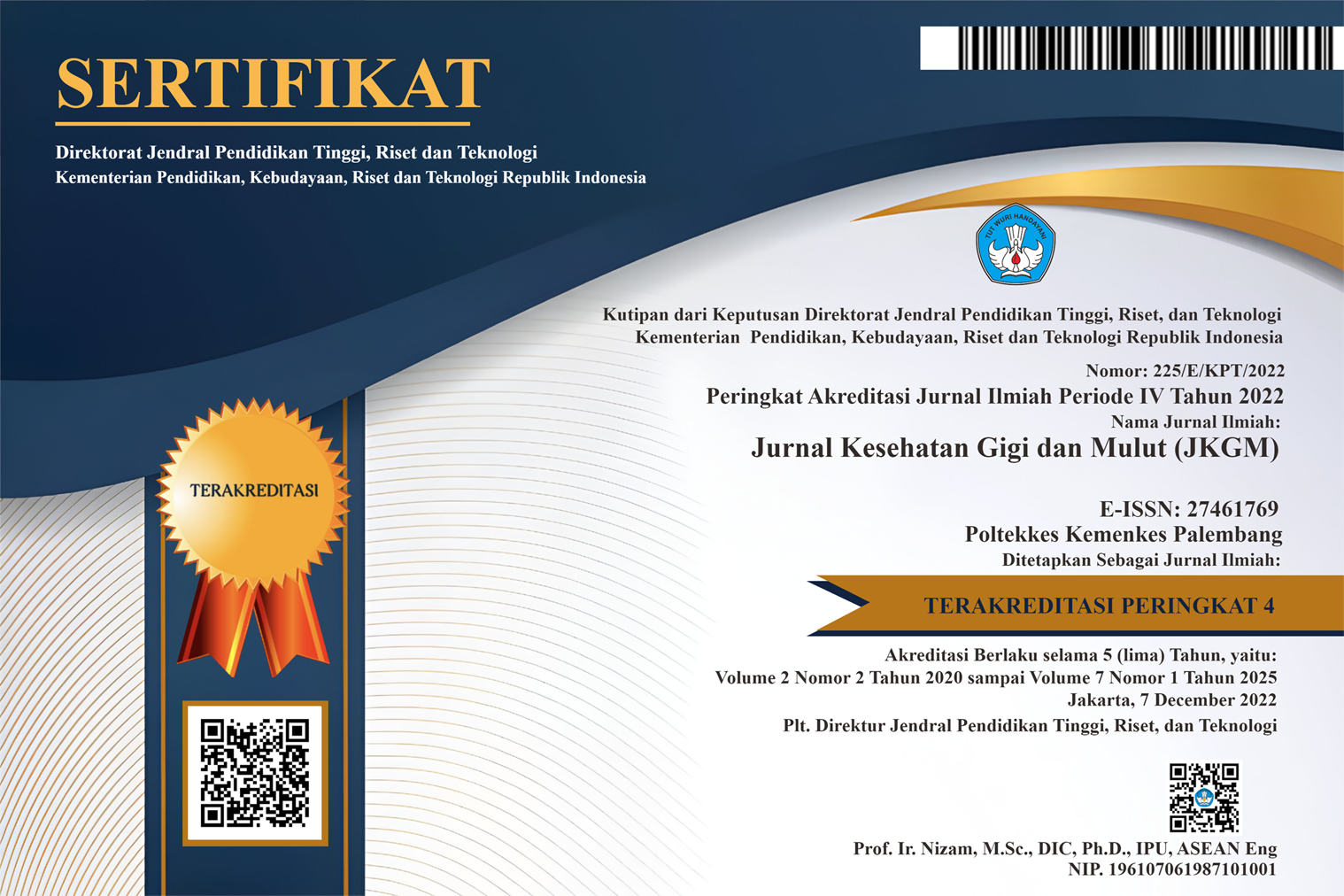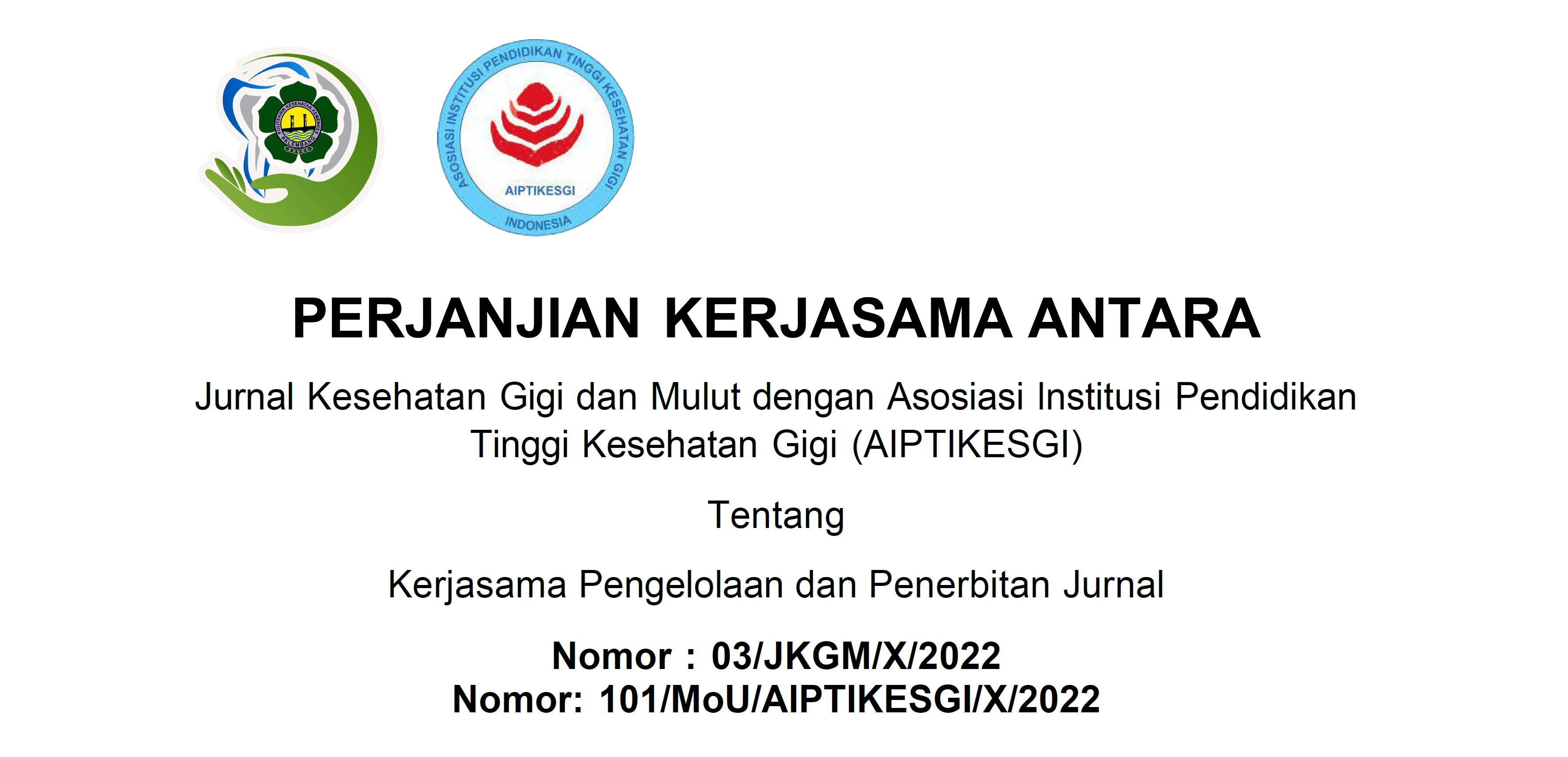TINGKAT RISIKO KARIES GIGI PERMANEN ANAK-ANAK TAMAN KANAKKANAK DI KOTA PALEMBANG DI MASA DATANG
Abstract
Caries in children gets less attention from parents because of the assumption that the child's teeth will be
replaced by permanent teeth. The consequences of caries that occur from the beginning are a disorder of
masticatory function, children are lazy to eat, and malnutrition can occur which affects the intelligence and
activity of children. The purpose of this study was to determine the potential risk level of permanent dental
caries in children who are currently attending kindergarten in the city of Palembang and its relationship with
caries risk factors. This study is an epidemiological survey with a cross sectional approach. The population of
this study was kindergarten children in Palembang city with a total sample of 767 children with a multi stage
sampling technique. The results of this study indicate that the average risk level of permanent dental caries in
children currently sitting in kindergarten is 81.9%, which is categorized as high caries risk. There was a
significant relationship between the risk level of permanent dental caries of kindergarten children in the
Palembang city area with child behavior, maternal knowledge, acid pH of dental plaque, white spot on the
surface of milk teeth, and caries experience in milk teeth.
Authors who publish with this journal agree to the following terms:
- Authors retain copyright and grant the journal right of first publication with the work simultaneously licensed under a Creative Commons Attribution License that allows others to share the work with an acknowledgement of the work's authorship and initial publication in this journal.
- Authors are able to enter into separate, additional contractual arrangements for the non-exclusive distribution of the journal's published version of the work (e.g., post it to an institutional repository or publish it in a book), with an acknowledgement of its initial publication in this journal.
- Authors are permitted and encouraged to post their work online (e.g., in institutional repositories or on their website) prior to and during the submission process, as it can lead to productive exchanges, as well as earlier and greater citation of published work















